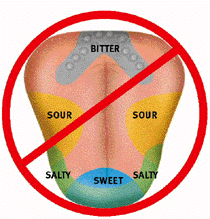Trust your Tongue and Nose
- Cristina

- Mar 12, 2021
- 3 min read
Updated: Apr 4, 2021
It will tell you almost everything you need to know about the wine you are tasting.

The tongue map outlining the different areas that a person would experience one of the four tastes was published in a 1901 paper by a German scientist David Hänig where he measured responses to taste stimuli in different areas of the tongue and found the strength of those responses varied depending on location. It had been widely accepted until recently where scientists now believe that taste buds can detect all tastes in all areas of the tongue.
Brian Lewandowski, a neuroscientist and taste expert at the Monell Chemical Senses Center in Philadelphia stated, “All regions of the tongue that detect taste respond to all five taste qualities. There are some mild regional differences in sensitivity for different taste qualities, but these differences are small enough that they do not play a clear role in taste perception.”
Stick out your tongue and look in the mirror. See all those bumps? Those are called papillae, and most of them contain taste buds. Taste buds are sensory organs. Taste buds have very sensitive microscopic hairs called microvilli. Those tiny hairs send messages to the brain about how something tastes, so you know if it is sweet, salty, sour, bitter, or umami.
The fifth basic taste “Umami” – this means “good flavor” in Japanese - has been accepted in the West since 1985. Umami is an appetitive taste. It is sometimes described as savory or meaty. For instance, think about how adding mushrooms to your traditional holiday stuffing will add some earthy characteristics to the taste and smell of the stuffing.
The average person has about 10,000 taste buds and they are replaced every 2 weeks or so. But as a person ages, some of those taste cells do not get replaced. An older person may only have 5,000 working taste buds. Therefore, certain foods may taste stronger to a younger person than they do to an older person. Smoking – tobacco or weed - may also reduce the number of taste buds a person has.
Your nose plays a huge role in what you taste. Olfactory receptors inside the uppermost part of your nose contains special cells that help you smell. They send messages to the brain.
Here is how it works: While you are chewing, the food releases chemicals that immediately travel up into your nose. These chemicals trigger the olfactory receptors inside the nose. They work together with your taste buds to create the true flavor of that flavorful strawberry by telling the brain all about it!
If you plug your nose it can be difficult to tell the difference between a potato and an apple. That is why things taste bland when you have a cold, and your nose is stuffed up.
Other sensations associated with wine tasting include tingling, warming, cooling, drying, numbing, and a coating feel on the tongue when you swirl and swishing the wine in your mouth.
The trick to wine tasting is to take your time. Leave the wine in your mouth for three to five seconds before swallowing. This action warms up the wine, sending signals about the bouquet and the aroma up through the nasal passage to your olfactory receptors and then to the limbic system of the brain. 90 percent of taste is derived from smell.




Comments